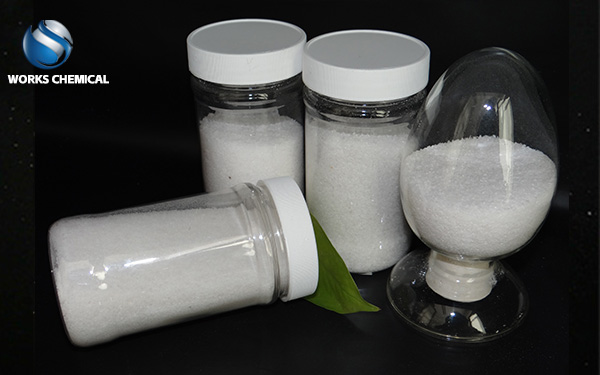
Commonly used sludge dehydrants include many types, each of which has different characteristics and application scenarios. The following are some common sludge dewatering agents and their characteristics:

Acrylamide (PAM) :
Polyacrylamide is a kind of high polymer dehydrating agent, which has strong hydrophilicity and good flocculation performance.
According to ionic properties, PAM can be divided into anionic, cationic and non-ionic types. Different ion types of PAM are suitable for different types of sludge treatment. For example, anionic PAM is often used for the dehydration of tailings water such as coal washing, sand washing, and mineral processing, while cationic PAM is often used for the dehydration of paper making, pharmaceuticals, urban sewage, and industrial sewage.
When using PAM, it is necessary to choose the appropriate dissolution ratio and dosage according to different sludge types and dehydration requirements.
Polyaluminum chloride (PAC) :
Polyaluminum chloride is a kind of inorganic polymer coagulant, through the mechanism of adsorption bridge and precipitation net trapping, so that the particles in the colloidal state of water can quickly aggregate and settle each other.
PAC is used in water treatment as turbidity removal agent, decolorizing agent, deoiling agent, deodorant, coagulant decolorizing agent, iron removal agent, etc., and can also be used as an additive in the paper industry.
Biological flocculant:
Biological flocculant is an environmentally friendly flocculant prepared by biotechnology, which has the advantages of non-toxic and biodegradable compared with traditional chemical flocculants.
The application of biological flocculants in sludge dewatering has gradually increased, especially in the treatment of sludge containing a lot of organic matter.
Alum:
Alum is one of the traditional inorganic flocculants, through hydrolysis to produce aluminum hydroxide colloids, suspended solids adsorption and net trapping, so as to achieve sludge dehydration.
The application of alum in sludge dewatering is relatively small, but it still has certain application value under certain specific conditions.
Lime:
By adjusting the pH value of the sludge, the heavy metal ions in the sludge can form precipitation, and the calcium hydroxide in the lime can also react with the organic matter in the sludge to improve the dewatering performance of the sludge.
Lime is often used as an auxiliary dehydrating agent in sludge treatment, but the dehydrating effect is limited when used alone.
Ferrous sulfate:
Ferrous sulfate ionizes ferrous ions in water, and ferrous ions have reducibility and can react with some oxidizing substances in the sludge, thereby improving the dewatering performance of the sludge.
Ferrous sulfate has relatively few applications in sludge treatment, but it can be used as an auxiliary dehydrating agent in some specific conditions.
Polyferric sulfate (PFS) :
Polyferric sulfate is a kind of inorganic polymer coagulant, through hydrolysis to produce polynuclear complex and other hydrolytic products, adsorption and net trapping of suspended matter in water, so as to achieve sludge dehydration.
PFS shows good dewatering effect in sludge treatment and is easy to store and transport.
In addition, there are other types of sludge dehydrants such as aluminum chloride. These sludge dehydrants have their own advantages and disadvantages. In practical application, they need to be selected and optimized according to the characteristics of sludge, treatment technology and treatment objectives. At the same time, when adding sludge dehydrant, it is necessary to pay attention to factors such as dissolution ratio, dosage and mixed reaction time to ensure the best dehydration effect.